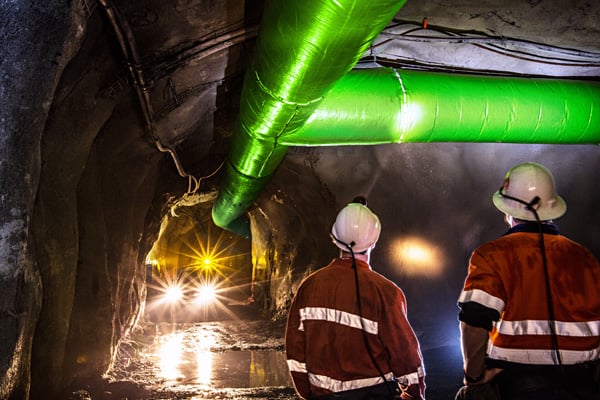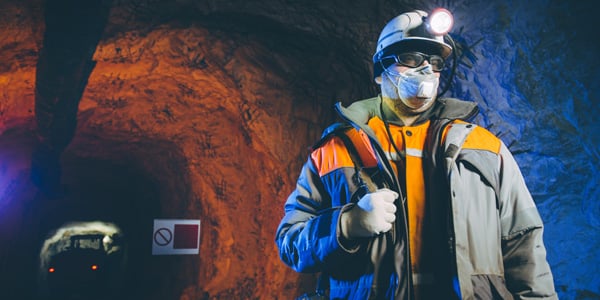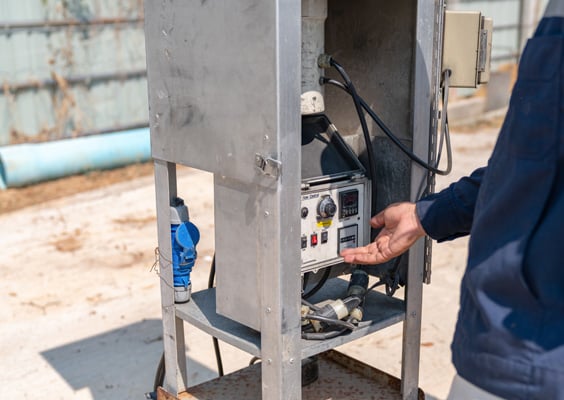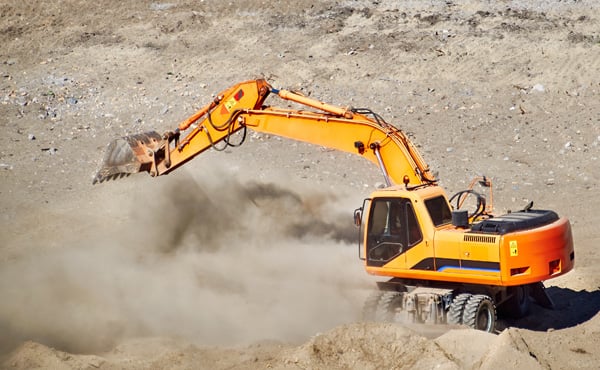Richard J Lee 9 min read
Navigating Compliance: How Your Mine Can Prepare for Stricter MSHA Regulations on Respirable Silica
Contributors
Richard J Lee
Subscribe to our newsletter
Introduction: As the mining industry braces itself for tighter regulations on respirable silica from the Mine Safety and Health Administration (MSHA), it's imperative for mine operators to proactively prepare for compliance. At RJ Lee Group, we understand the challenges and importance of meeting these new standards while ensuring the safety and well-being of your workforce.
Understanding the New Regulations: The proposed changes by MSHA signify a shift towards stricter standards for respirable silica exposure in mining operations. These regulations are aimed at safeguarding miners against the health hazards associated with silica dust inhalation, including silicosis and other respiratory illnesses. There are a few key points that mine operators need to be aware of:
- Permissible Exposure Limit (PEL): The proposed rule would require mine operators to maintain miners’ PEL for respirable crystalline silica at or below 50 micrograms per cubic meter of air for a full shift exposure, calculated as an 8-hour time-weighted average.
- Scope: The rule would apply to both metal/nonmetal (MNM) and coal mines.
- Exposure Sampling: The proposed rule would mandate regular sampling of miners’ exposure to silica.
- Free Medical Surveillance: It would provide free medical surveillance for metal and nonmetal miners.
Steps to achieve compliance: In order to meet these more stringent requirements, mine operators will use a mix of equipment, procedures, and training to ensure that remain compliant and offer the maximum protection for their workforce. A combination of these strategies is likely to be more effective than relying solely on one approach.
- Added Engineering Controls

- Ventilation Systems: Efficient ventilation systems that are properly designed and maintained can be used to remove airborne silica particles, significantly reduce exposure.
- Wet Methods: The use of wet drilling, cutting, and grinding techniques helps to suppress dust generation. Water sprays or misting systems can keep silica particles from becoming airborne.
- Enclosed Cabs: Enclose equipment cabs such as drilling rigs, loaders, and crushers help to prevent silica dust from escaping into the work environment.
- Ventilation Systems: Efficient ventilation systems that are properly designed and maintained can be used to remove airborne silica particles, significantly reduce exposure.
- Improved Work Practices:
- Isolation: Isolating workers from high-exposure areas during drilling, blasting, or other activities that generate silica dust reduces exposure.
- Scheduled Breaks: Scheduling regular breaks will allow miners the opportunity to move away from dusty areas, reducing their time of exposure.
- Personal Hygiene: Encouraging proper hygiene practices, such as washing hands and face before eating or drinking, helps to prevent the ingestion of silica particles.
- Isolation: Isolating workers from high-exposure areas during drilling, blasting, or other activities that generate silica dust reduces exposure.
- Upgraded Personal Protective Equipment (PPE):

- Respirators: When engineering controls alone cannot maintain exposure below the PEL, appropriate respiratory protection such as N95 respirators must be provided.
- Protective Clothing: Wearing appropriate clothing helps to protect miners by preventing dust accumulation on their bodies.
- Respirators: When engineering controls alone cannot maintain exposure below the PEL, appropriate respiratory protection such as N95 respirators must be provided.
- Increased Training and Education:
- Awareness: Educating miners about the hazards of silica exposure, safe work practices, and the importance of following control measures is an important component of improving safety and remaining compliant.
- Supervisor Training: Supervisors must also be trained so that they can recognize and address silica exposure risks.
- Awareness: Educating miners about the hazards of silica exposure, safe work practices, and the importance of following control measures is an important component of improving safety and remaining compliant.
- Regular Monitoring and Sampling:

- Sampling: Even with proper engineering controls, silica levels must be continually monitored by conducting regular air sampling and testing. Control measures can then be adjusted based on the results.
- Health Surveillance: The health of miners must also be monitored through regular medical surveillance to detect early signs of silica-related diseases.
- Sampling: Even with proper engineering controls, silica levels must be continually monitored by conducting regular air sampling and testing. Control measures can then be adjusted based on the results.
- Ensuring Collaboration and Communication:
- Collaboration: Operators will involve miners, management, and safety personnel in identifying exposure risks and implementing control measures for a comprehensive approach to enhancing safety.
- Communication: Operators will regularly communicate updates on their silica exposure reduction efforts.
- Collaboration: Operators will involve miners, management, and safety personnel in identifying exposure risks and implementing control measures for a comprehensive approach to enhancing safety.
Assessment of Current Practices: A crucial first step is to assess your current respirable silica testing and monitoring protocols. By identifying any gaps or areas needing improvement, you can lay a solid foundation for compliance efforts. Testing now will also provide you with a baseline to compare against as you implement protective measures and monitor miners’ health. Some questions to ask as you perform an assessment:
- Current Risk: What is the silica exposure risks across your mining operations?
- Engineering Controls: What would be required to implement or upgrade your ventilation systems and engineering controls to achieve the new standard?
- PPE: Do your miners have access to effective personal protective equipment that is designed to mitigate silica exposure?
- Testing Technology: Do you have a relationship with an accredited testing laboratory with access cutting-edge respirable silica testing technology and services?
- Training Programs: What changes are required to educate your workforce on silica hazards and prevention strategies?
- Budgeting and Resources: What is the cost associated with compliance measures and do you have the resources available to meet regulatory requirements within you budget constraints?

As the deadline for stricter MSHA regulations on respirable silica approaches, proactive preparation is key to ensuring compliance and protecting your miners' health. It is important to stay informed about regulatory timelines and deadlines for compliance implementation to avoid any last-minute rushes. Planning and scheduling necessary adjustments in advance can ensure a smooth transition to compliance.
Partnering with an accredited testing laboratory like RJ Lee group can streamline your compliance efforts. We're here to support you every step of the way with our advanced sampling and testing technology and expert guidance from our scientists. We provide the right sampling media for your application, have the capacity to handle your needs, and offer the best turnaround times in the industry. Our team of experts are available for consulting support, so let's navigate compliance and prioritize safety in your mining operations together.
Share this post

